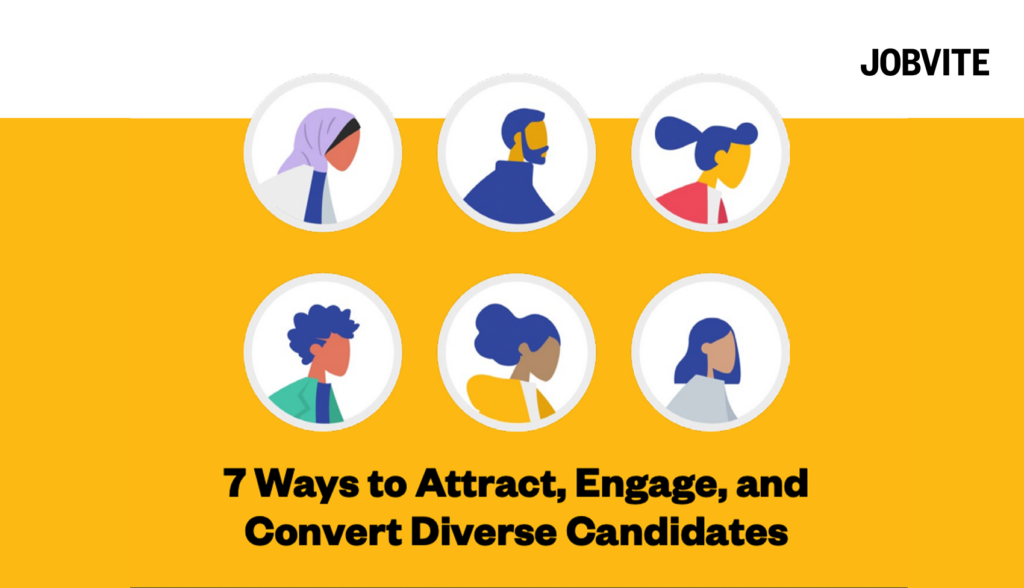Candidates today are more emboldened than ever to seek out roles and companies that match their own values. They want a supportive and inclusive workplace culture that affords equal opportunities to each team member and make people feel included in the success of the business.
In fact, many candidates are now willing to pass on roles within companies that do not demonstrate commitment to equity and inclusion, make employees feel welcome and heard, and provide a safe and equitable work environment — regardless of pay or career opportunities offered.
According to recent Employ data, 45% of job seekers today want employers to actively focus on social justice and diversity equity, and inclusion.
Meanwhile, 38% of candidates would turn down a job offer if the company lacked diversity in its workforce or had no clear goals for improving DEI and adding more diverse employees.
Simply put, if you’re looking to help your business transform into a more inclusive workplace where there is diverse talent company-wide and leadership encourages employees to voice their opinions on day-to-day work and the long term vision of the company, you’ve come to the right place.
Why your C-suite must prioritize the creation of a more inclusive workplace today
Companies that focus on DEI in the workplace increase employee engagement and commitment and drive greater levels of performance — productivity that boosts the bottom line.
Put plainly, those orgs with a diversity of representation in employee ability, sexual orientation, gender identity, ethnicity, neurodiversity, familial status, personal beliefs and other areas are more likely to succeed in their industries compared to others that lack this crucial component.
This wider diversity of representation across the company increases innovation, a sense of belonging, employee happiness, and even the bottom line. It’s even become a key metric for success that it’s now an evaluation category for the Fortune 500 list.
Need proof? We’ve got the data. Workers today also want their employer to have an active voice in moral and social justice conversations. And they do their homework. Employ research reals:
- 81% of candidates check a company’s website for their stance on DEI before applying
- 71% of candidates review job postings to ensure inclusive language is used
- 65% of candidates research a company’s stance on social issues in the recent past
- 64% of candidates check the company’s website for diversity and inclusion stats
- 57% of candidates ask the employer about the culture of DEI at the company
In such a competitive hiring market that favors candidates, your company must clearly communicate your commitment to DEI and demonstrate program effectiveness to attract top talent.
That begs the question: What can your business do to bolster its DEI programs and enhance and build an premier workplace that leads to a stellar employee experience due to a highly inclusive environment?

How to achieve a more inclusive workplace
Committing time, resources, and a budget to prioritize DEI-centric initiatives can seem challenging at first. But, any talent team can improve their organization with the right resources.
Here are five key strategies your company can use to increase the diversity of candidate slates and create an inclusive work environment this year — one that can help you attract and retain top talent
1) Prioritize DEI at every level
To create a supportive and inclusive workplace environment, company leaders must come together with recruiting teams to prioritize DEI at every level across the org.
Recruiting strategies should reflect this priority for the business and include a wide variety of employee and community voices. The good news is this year, 51% of HR decision makers plan to increase their technology investments in DEI.
2) Measure and improve DEI effectiveness
Before you commit to trying an entirely new DEI investment, gather data and analyze DEI efforts at your business. Learn where your hiring practices are successful in recruiting diverse candidates, and where they are not.
Measure key recruiting metrics like source of candidate, conversion rates, and candidate engagement to get to know your talent pool. Metrics help to easily pinpoint areas of improvement as well as create tangible goals for DEI in the org.
3) Use inclusive job descriptions
Employers and recruiting teams can miss the mark when it comes to posting inclusive job descriptions. Sometimes, job postings feature language that may be offensive or exclusive to diverse candidates.
Make sure to prioritize creating more inclusive job descriptions that reduce biased language. Tap into job description grading tools that analyze your job posting and help you overcome recruitment obstacles to attract the best applicants.

4) Focus on sourcing efforts with a DEI lens
Prioritize finding candidates who are from diverse backgrounds. Look for intelligent sourcing tools that eliminate bias and identify qualified candidates from a variety of sources. Focus on finding diverse candidates from specific groups like veterans, recent college graduates and interns, or active military. Broadcasting your requisition to a variety of job boards and channels will also help ensure a wide range of applicants.
5) Prioritize and showcase inclusive content
With candidates focusing on the recruitment content presented by employers, make sure all your recruitment marketing messages on career sites, social media, and other forms of outreach demonstrate inclusivity.
Prioritize telling employee stories of diverse workers, share community stories, and tap into a variety of viewpoints and lived experiences to showcase your company’s DEI commitment.
If you have a number of employee resource groups at your org, ask team members if they’d be willing to get in front of the camera to provide a testimonial of sorts for your business that details their experience with their ERG. Or, see if they’d like to write a guest post for your blog on DEI.
Staying focused on creating an inclusive workplace a must for your enterprise org
Whether your team is looking to expand an already robust DEI program or is learning how to make it a priority as part of your recruiting efforts, remember, DEI is a journey, not a destination.
Ensure you are investing in the people, processes, and tech to move the needle on your DEI programs and showcase to candidates — and current employees — that you take building a more inclusive, equitable workplace seriously and want to build a culture in which everyone is welcomed and thrives.
For more insights on bolstering DEI in your company, download the in-depth eBook: Why Your Company Should Double Down on Diversity, Equity, and Inclusion (DEI) Initiatives This Year.





